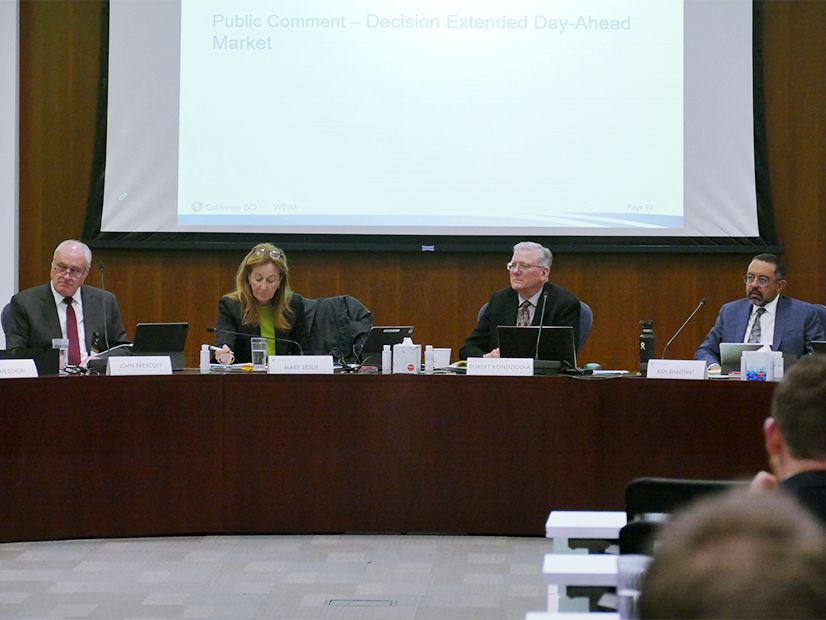FERC has decided to let stand SERC Reliability’s $75,000 penalty against Duke Energy Florida (NYSE:DUK) for violating NERC reliability standards (NP23-7), along with the regional entity’s settlement with the Tennessee Valley Authority for another set of violations, carrying no financial penalty (NP23-8).
The commission announced last week that it would not review the settlements, which NERC submitted Dec. 29; the ERO submitted its monthly spreadsheet Notice of Penalty on that day as well, detailing SERC’s settlements with Virginia Electric and Power Co. for its facility ratings issues. (See related story, SERC Hits Virginia Electric with $320K in Penalties.)
Also approved last week were several settlements for infringements of NERC’s Critical Infrastructure Protection (CIP) standards (NP23-4, et al.). For these settlements, identifying information — including the utilities and REs involved, and when and where they occurred — was omitted, in accordance with NERC and FERC’s policy on CIP violations.
Duke Neglects to Coordinate Protection Settings
Duke’s penalty stems from a violation of PRC-001-1 (System protection coordination) that SERC discovered during a compliance audit in 2019. While the standard was not in place at the time of the audit, the RE determined that the violation began in 2012 when it was in effect.
Requirement R3 of the standard states that transmission operators (TOPs) must coordinate new protective systems and changes to protective systems with neighboring TOPs and balancing authorities, but SERC claimed that Duke failed to do so in 2012 and 2013 when it was conducting maintenance on its transmission lines.
The utility decided to change protective settings on its 115-kV line between Atwater and Quincy, increasing the timing on the zone 2 and 3 time distance relays to 45 cycles. However, it did not communicate the changes to the neighboring TOP, whose zone 3 relays remained set at 42 cycles. The mismatch remained in place until 2017, when the uncoordinated relays caused the neighboring utility’s breaker to trip, leading to a 63-MW loss of load on its system.
SERC found that this incident also constituted a violation of Requirement R5 of the same standard, which states that TOPs must inform neighboring TOPs of changes in their transmission systems that could require changes to the neighbor’s system. The RE said that Duke’s “failure to notify its neighboring TOP prevented the neighboring TOP from receiving sufficient information to review its systems and led to the transmission systems being mis-coordinated.”
Duke and its neighbor agreed to coordinate the timing cycles after this incident, and the changes were completed by May 2021. Additional mitigation actions by Duke include implementing setting changes to improve relay coordination and updating process documents to mandate coordination with neighboring transmission and generation owners.
TVA Reports Voltage, Maintenance Issues
The TVA settlements involve infringements of VAR-002-4.1 (Generator operation for maintaining network voltage schedules) and PRC-005-2 (Protection system maintenance). TVA self-reported both issues, which according to SERC comprised “multiple instances of smaller risk issues which, when aggravated, increase the overall risk of both to moderate.”
According to SERC’s filing, the utility initially reported its problems with VAR-002-4.1 on July 2, 2019, describing three incidents in which, as a generator operator, it failed to maintain the generator voltage schedule provided by its TOP as mandated by Requirement R2 of the standard. All three incidents occurred in April 2019 at TVA’s Watts Bar Nuclear Plant, located in Rhea County, Tenn. TVA later amended the self-report to include incidents at other nuclear and non-nuclear facilities it operated between 2018 and 2022, for a total of 287 excursions.
Mitigating actions undertaken by TVA include clarifying voltage schedule excursion requirements for responsible staff and updating equipment at affected facilities. The utility reported its completion of the mitigation plan on Feb. 2, 2022.
TVA’s violation of PRC-005-6 involved Requirement R3, which provides the schedule by which transmission owners, generation owners and distribution providers must maintain their protection systems and other components. The utility reported to SERC in May 2021 that it had discovered multiple instances of noncompliance; it had first detected the issues a year prior, but SERC determined that the violations extended as far back as 2015 and concerned PRC-005-2, the version of the standard that was in place at the time.
Places where problems were found include both transmission and generation facilities, some of which were also uncovered in the VAR-002-4.1 violation, such as the Cumberland Fossil Plant and Sequoyah Nuclear Plant. SERC and TVA identified various causes, including lack of internal controls and ineffective or inadequate internal controls. The utility’s mitigation steps included revising procedures within its PRC-005 program and creating training modules, along with testing and updates of equipment at affected facilities; the work is expected to be completed by August.
Because TVA is a federal government entity, SERC could not issue any monetary sanctions.



